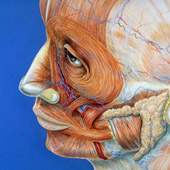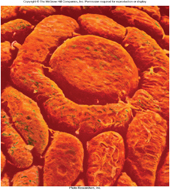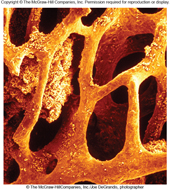| |
|
A/P Lab Orientation |
|
| |
Welcome to my A/P Lab Resource Center. This Web site is designed to provide you with additional resources. Your standard "tool kit" should include the recommended Lab Manuals (2) and the A/P Lecture Textbook. You should bring these reference materials with you to every class.
Your A/P Lab Exam(s) will require you to identify the "Unit Lab Objectives" on a wall chart, anatomical model, or dissected specimens. A list of the "Lab Objectives" can be found in the anatomy laboratory manual. So you need to learn these structures in relationship to the resources that you have in the laboratory. There is a lot to know and you don't have much time. So use all your lab time and don't procrastinate.
|
 |
|
|
| |
 |
It is important that you prepare for your anatomy lab class. Before class, you need to review and identify in your reference manuals all the anatomical structures for the current unit. When you walk into class, you should know the names of the structures and their general location. If you do this, then you can use your lab time to locate and identify the structures on the charts, models, and dissection specimens in the classroom. |
|
|
| |
It is good to work with a lab partner or two. If you study with someone, you can constantly quiz each other and work through problems together. Confucius said, "Repetition is the key to learning". It is important that you "verbalize and/or write out " the answers when you quiz each other. Remember, if you need help, then it is your responsibility to ask for help!
In this anatomy lab, the instructor is a facilitator. We are here to help you learn anatomy but you must locate, identify and memorize the required structures. There is no "lab lecture". Lab time is your time so use it wisely. Occasionally, I'll ask you for your attention so I can make a suggestion or cover a specific topic. These interludes should be limited to 15 minutes or less. |
|
| |
The Science Department provides an Auxiliary AP Lab in the Center Campus Library. Here you will find charts and anatomical models similar to the study aids found in your lab. Jeanne Berch is the "Lead Tutor" for Biology in the Library. If you need extra lab time to learn the Unit Objectives, then you can use the Library.
Anatomy and Physiology is a complex subject. There are many structures to memorize, all the structures are important, and everything is interrelated. So even if you have the luxury of having a year to learn this subject, it can be overwhelming. If you only have sixteen weeks to learn this subject, then you will need the mental and physical stamina of a mountain climber preparing to summit Mt. Everest. So good luck to everyone! Together we can do this! I'll see you on the top!
|
 |
|
|
| |
|
|
| |
Lab's Do and Don't List! |
|
| |
|
|
| |
1. |
|
Come to lab prepared. Familiarize yourself with all the current lab's Learning Objectives before you come to lab. Use your lab time to identify required structures on the models and charts. These are the objects that will be used on the exams. Your success in lab is a direct function to your preparation. |
|
|
|
2. |
|
Do not use pencils or pens as "pointers" in lab because these are likely to leave marks on the objects. Please use the "wood" pointers which are provided for you in the lab. |
|
|
|
| 3. |
|
Wash your hands before you enter the lab. This will reduce the amount of oil and dirt that you transfer to the models and wall charts. |
| |
|
|
4. |
|
Please turn your cell phones off and do not "text" in my class. If you need to use your cell phone then please excuse yourself from the room. |
| |
|
|
| 5. |
|
Food and beverage are prohibited in the lab! |
| |
|
|
6. |
|
Respect your fellow students. Your lab time is self directed "study time". It is not a "social hour". Do not engage in activity that will disrupt other student's study. |
|
|
|
| 7. |
|
If you need additional lab time to learn your assignments then you can use the "Library's Anatomy Center & Tutorial Service". |
| |
|
|
8. |
|
You will need to read and sign an agreement about "Lab Safety". These are rules that you must follow in lab which includes a dress code. |
|
|
|
|
| |
|